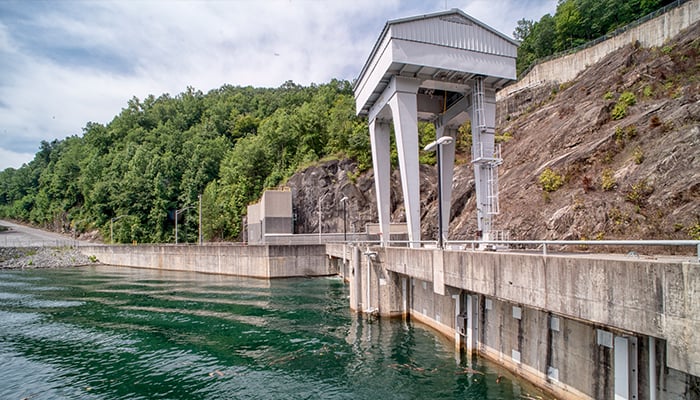
A representative of US energy holding company Duke Energy said yesterday that “no major technological breakthroughs would be required” for it to reach 2030 emissions reduction goals and that battery storage will play an important role.
North Carolina-headquartered Duke Energy serves around 7.7 million customers with electricity and around 1.6 million with gas in a number of US states as a regulated utility. It also owns Duke Energy Renewables, a commercial unregulated renewables company. Through its utility and commercial businesses combined, Duke owns or is contracted for about 8,000MW of renewables and energy storage in more than 15 states.
Enjoy 12 months of exclusive analysis
- Regular insight and analysis of the industry’s biggest developments
- In-depth interviews with the industry’s leading figures
- Annual digital subscription to the PV Tech Power journal
- Discounts on Solar Media’s portfolio of events, in-person and virtual
Douglas Esamann, executive VP for energy solutions at Duke Energy said yesterday in an online session at ESACon20, this year’s edition of the annual conference hosted by the national Energy Storage Association (ESA), that having adopted a “more aggressive goal” around climate strategy that called for 50% reduction in CO2 emissions by 2030 and be net zero by 2050, the company has made a “great start already”.
Duke has already reduced carbon dioxide emissions by 39% over 2005 figures, and continues to “build on that track record” in terms of delivering cleaner energy and reducing emissions, Esamann said. He added that Duke believes it can achieve that 2030 target through “technologies that largely exist today,” including energy storage which is becoming “more prevalent”: “no new major technological breakthrough [is] required,” Esamann said.
This week the company announced that it has switched on a 9MW battery project in North Carolina and announced three new battery storage projects in Florida. Of the 9MW battery system in Duke Energy’s home state, Esamann said that originally, the utility arm had proposed building a natural gas peaker plant “and some other generation” in the city of Asheville.
The local community however, preferred for its utility to go instead for clean energy. Many people do not realise, Esamann said, that North Carolina is behind only California for grid-tied solar in the US and so in the Asheville community of Shiloh, the company is investing in solar PV and the battery storage system.
“The idea would be that we’re trying to avoided putting the peaker in and the fossil fuels that would come with a gas-fired peaker,” Esamann said.
“I don’t think we’ve made it all the way there yet but we continue to work with the community – it’s a great way to engage with the communities around a solution related to storage as part of the equation here.”
A Duke Energy press release said that the battery plant, which is a lithium-ion system made by Samsung operating next to one of the utility’s substations, will cost less than US$15 million, and will be used to help the electric system operate with greater efficiency, providing frequency regulation and other grid services.
Energy storage becoming more and more of a cost-effective option for long-term planning
Duke Energy’s Douglas Esamann said that energy storage “will play an ever-bigger role as we go forward,” and that to date, the company’s investment in storage has been largely about demonstration projects either of technology or of the value and benefits that energy storage can bring. Duke is increasingly able to demonstrate the “stack” value of the multiple services and applications that energy storage can provide.
“As we look to integrate storage into our integrated resource planning process, the cost of batteries and storage coming down continue to make it more and more of an option within our resource plans and more and more of an opportunity for us to incorporate the storage into our planning system,” Esamann said.
This week company subsidiary Duke Energy Florida announced three energy storage projects in the state that will help it towards a target set of 50MW of battery storage that can “bring information back to stakeholders and demonstrate value we see in storage,” Douglas Esamann said.
Those three lithium-ion battery projects include an 18MW battery site at the existing 45MW Lake Placid Solar Power Plant – Duke Energy Florida’s first retrofit solar-plus-storage site which will make the solar energy dispatchable and improve efficiency; an 8.25MW standalone battery project near Gainesville that will help a local network with power quality and reliability; and a 2.5MW battery at a solar microgrid for a school in Pinellas County which paired with 1MW of solar on a parking canopy will support grid operations and provide backup to the school, which operates when needed to as a hurricane shelter.
After Duke Energy’s “strategy refresh” on climate, the company wants to continue to meet customers’ needs for reliable and affordable power, Douglas Esamann said during his presentation at ESACon20 yesterday. While 2030’s 50% climate goal appears eminently achievable, the 2050 net zero target may be a little more challenging.
While he mentioned that it is important for Duke to be able to renew licenses on its 11,000MW of nuclear generation capacity, Duke is also going to double its 8GW of renewables by 2025 alone. Nonetheless, achieving net zero will likely require “significant investment in R&D” as well as “significant work amongst different parties and organisations to come together and come up with solutions”.
According to the company’s own modelling, a net zero scenario without any new natural gas investment would require investment in 40,000MW of wind and solar by 2050 and 15,000MW of energy storage on Duke’s networks, which the executive VP pointed out would be 17x what’s installed across the entire US today.
“That’s the challenge but also the opportunity for storage,” Esamann said, adding that the company looks forward to putting energy storage in “the areas where it makes the most economic sense for our customers moving forwards.”






